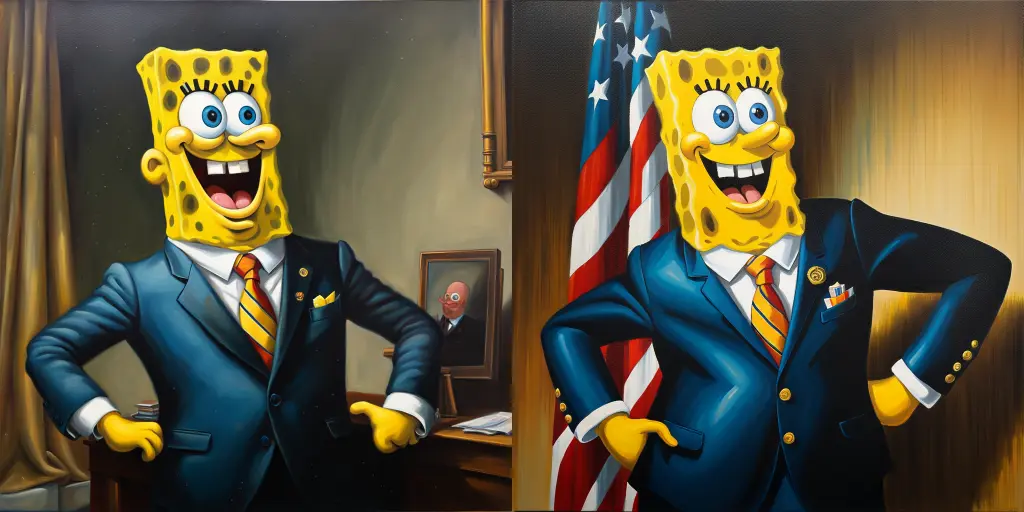license: mit
base_model: stabilityai/stable-diffusion-xl-base-1.0
tags:
- stable-diffusion
- stable-diffusion-diffusers
- text-to-image
- diffusers
- lora
inference: true
sdxl-wrong-lora
A LoRA for SDXL 1.0 Base which improves output image quality after loading it and using wrong as a negative prompt during inference. You can demo image generation using this LoRA in this Colab Notebook.
The LoRA is also available in a safetensors format for other UIs such as A1111; however this LoRA was created using diffusers and I cannot guarantee its efficacy outside of it.
Benefits of using this LoRA:
- Higher detail in textures/fabrics, particularly at full 1024x1024 resolution.
- Higher color saturation and vibrance.
- Higher sharpness for blurry/background objects.
- Better at anatomically-correct hands.
- Less likely to have random artifacts.
- Appears to allow the model to follow the input prompt with a more expected behavior, particularly with prompt weighting such as the Compel syntax.
Usage
The LoRA can be loaded using load_lora_weights like any other LoRA in diffusers:
import torch
from diffusers import DiffusionPipeline, AutoencoderKL
vae = AutoencoderKL.from_pretrained(
"madebyollin/sdxl-vae-fp16-fix",
torch_dtype=torch.float16
)
base = DiffusionPipeline.from_pretrained(
"stabilityai/stable-diffusion-xl-base-1.0",
vae=vae,
torch_dtype=torch.float16,
variant="fp16",
use_safetensors=True
)
base.load_lora_weights("minimaxir/sdxl-wrong-lora")
_ = base.to("cuda")
During image generation, use wrong as the negative prompt. That's it!
Examples
Left image is the base model output (no LoRA) + refiner, right image is base (w/ LoRA) + refiner + wrong negative prompt. Both generations use the same seed.
I have also released a Colab Notebook to generate these kinds of side-by-side comparison images, although the seeds listed will not give the same results since they were generated on a different GPU/CUDA than the Colab Notebook.
realistic human Shrek blogging at a computer workstation, hyperrealistic award-winning photo for vanity fair (cfg = 13, seed = 56583700)
pepperoni pizza in the shape of a heart, hyperrealistic award-winning professional food photography (cfg = 13, seed = 75789081)
presidential painting of realistic human Spongebob Squarepants wearing a suit, (oil on canvas)+++++ (cfg = 13, seed = 85588026)
San Francisco panorama attacked by (one massive kitten)++++, hyperrealistic award-winning photo by the Associated Press (cfg = 13, seed = 45454868)
hyperrealistic death metal album cover featuring edgy moody realistic (human Super Mario)++, edgy and moody (cfg = 13, seed = 30416580)
Methodology
The methodology and motivation for creating this LoRA is similar to my wrong SD 2.0 textual inversion embedding by training on a balanced variety of undesirable outputs, except trained as a LoRA since textual inversion with SDXL is complicated. The base images were generated from SDXL itself, with some prompt weighting to emphasize undesirable attributes for test images.
You can see the code to generate the wrong images in this Jupyter Notebook.
Notes
- The intuitive way to think about how this LoRA works is that on training start, it indicates an undesirable area of the vast highdimensional latent space which the rest of the diffusion process will move away from. This may work more effectively than textual inversion but more testing needs to be done.
- The description of this LoRA is very careful to not state that the output is objectively better than not using LoRA, because everything is subjective and there are use cases where vibrant output is not desired. For most use cases, the output should be better desired however.
- It's possible to use
not wrongin the normal prompt itself but in testing it has not much effect. - You can use other negative prompts in conjunction with the
wrongprompt but you may want to weight them appropriately. - All the Notebooks noted here are available in this GitHub repo.





